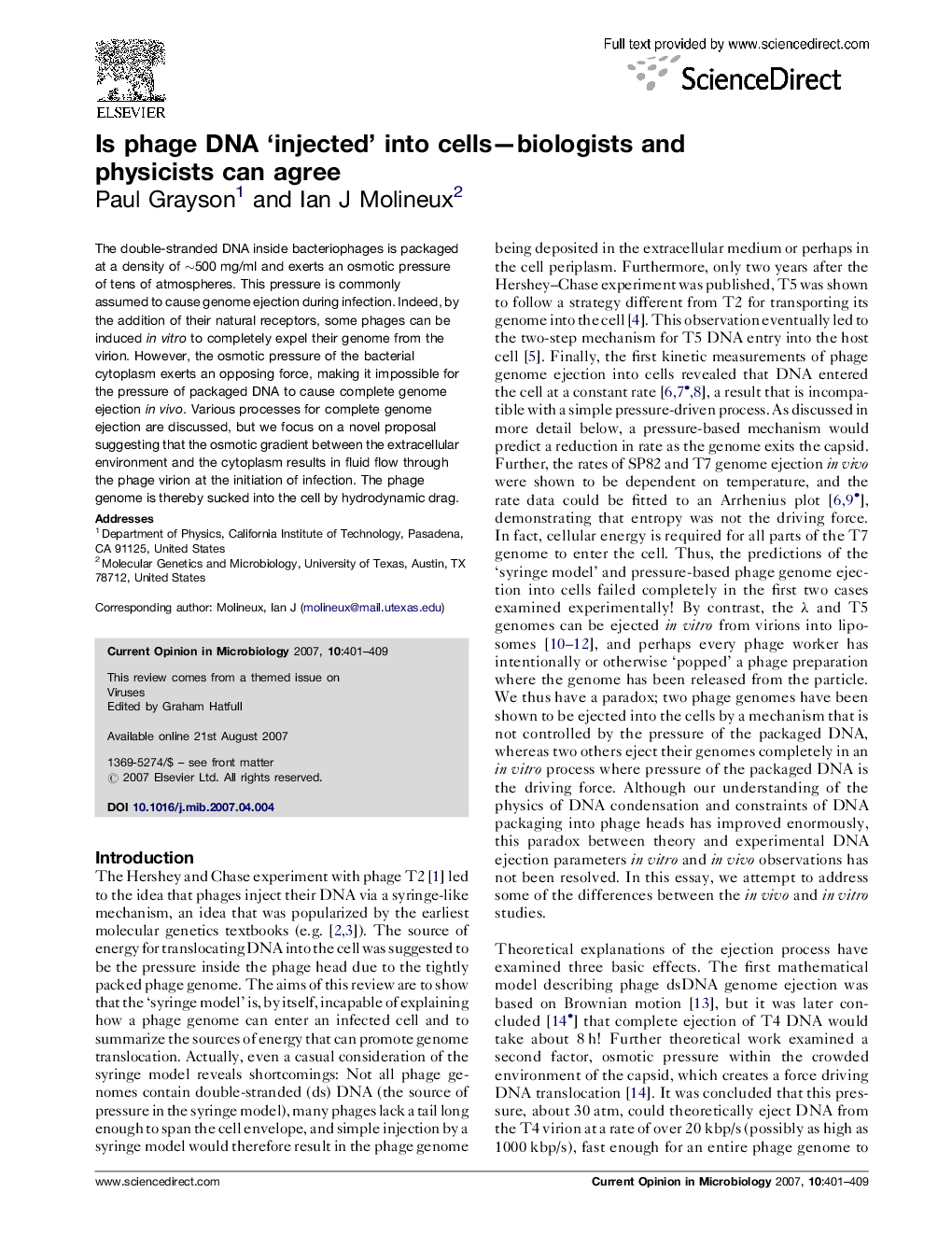| Article ID | Journal | Published Year | Pages | File Type |
|---|---|---|---|---|
| 3399658 | Current Opinion in Microbiology | 2007 | 9 Pages |
The double-stranded DNA inside bacteriophages is packaged at a density of ∼500 mg/ml and exerts an osmotic pressure of tens of atmospheres. This pressure is commonly assumed to cause genome ejection during infection. Indeed, by the addition of their natural receptors, some phages can be induced in vitro to completely expel their genome from the virion. However, the osmotic pressure of the bacterial cytoplasm exerts an opposing force, making it impossible for the pressure of packaged DNA to cause complete genome ejection in vivo. Various processes for complete genome ejection are discussed, but we focus on a novel proposal suggesting that the osmotic gradient between the extracellular environment and the cytoplasm results in fluid flow through the phage virion at the initiation of infection. The phage genome is thereby sucked into the cell by hydrodynamic drag.
